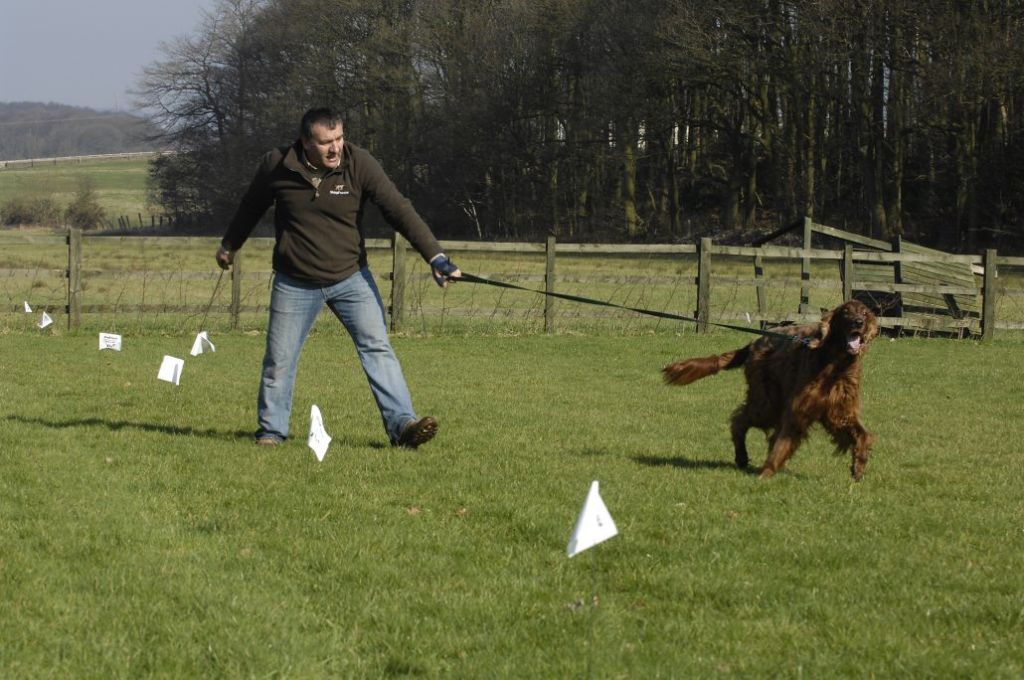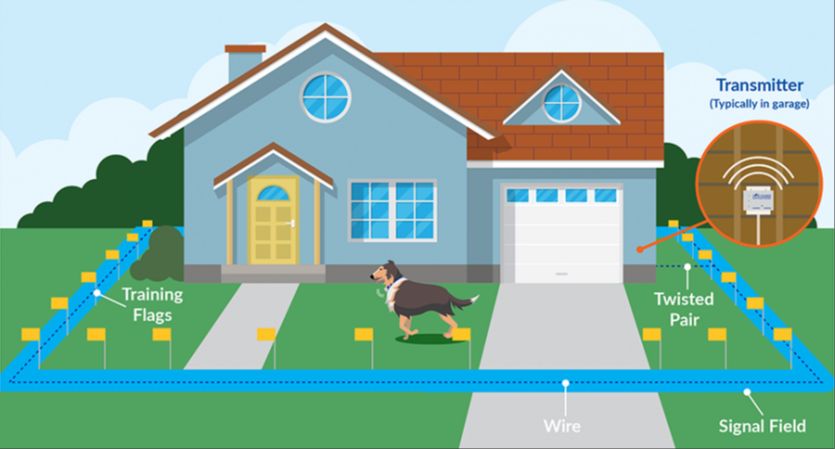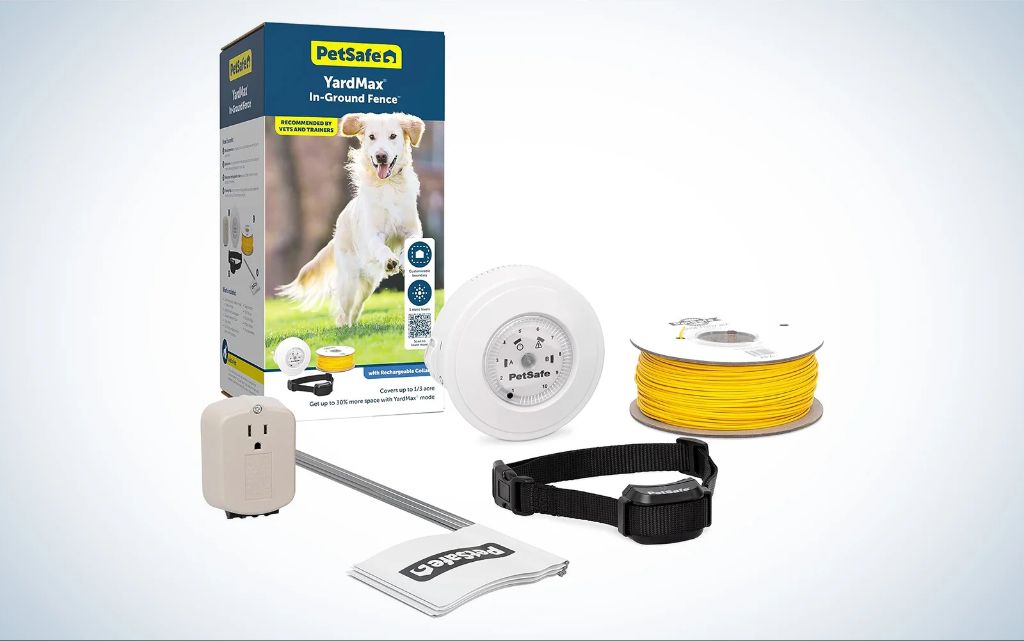Introduction
Electric dog fences, also known as invisible dog fences or underground dog fences, are systems designed to contain dogs in a certain area using a mild electric shock delivered through a collar. They consist of a buried wire that emits a radio signal, a receiver collar worn by the dog, and a transmitter.
The buried wire marks the boundaries where the dog should be contained. When the dog approaches the boundary, the collar emits a warning beep. If the dog continues past the boundary, the collar delivers a mild static shock. This trains the dog to associate the boundaries with the unpleasant stimulus, deterring them from crossing.
The shock is harmless but unpleasant. It startles the dog to get their attention and deter them from going further. The intensity can be adjusted to the dog’s size and temperament. The goal is to condition the dog to turn back at the warning beep before a shock occurs.
Pros of Electric Dog Fences
Electric dog fences allow owners to establish a safe zone around their property without having to construct a physical barrier. Installing an electric fence is often much less expensive and labor intensive than building a traditional fence.

Electric fences can cover large areas of land. According to Vetstreet, electronic fences can be designed to cover up to 25 acres. This makes them an ideal option for owners with a large yard or acreage.
Invisible fences are versatile and can conform to almost any terrain. Unlike physical fences, electric fences can span hills and uneven land. This adaptability also allows the fences to avoid existing obstacles like trees and gardens.
For some dogs, electric fences provide enough freedom while also supplying structure and boundaries. Without the temptation to run loose, dogs may feel they have adequate space to exercise within the set perimeter.
Cons of Electric Dog Fences
While electric dog fences offer convenience and can be effective for some dogs and situations, they also have some downsides to consider (vcfahospitals.com).
One major concern is that they can harm dogs physically and psychologically if used improperly (drjensdogblog.com). The invisible barrier enforced by the electric shock can create fear, anxiety and confusion in dogs. It may suppress a dog’s natural exploratory behavior and damage the human-animal bond through a negative association with punishment.
Electric fences depend heavily on training and temperament. They are unsuitable for aggressive dogs, fearful dogs, and high prey drive dogs who may burst through the fence when aroused rather than be deterred by the shock. Proper introduction and monitoring is required. If misused, it can lead to extreme stress or other behavioral issues for some dogs.
Additionally, electric fences do nothing to keep other animals or people out of a yard. So they cannot prevent a dog from being harassed, stolen, or running off the property if sufficiently motivated. Fences also do not protect dogs from environmental hazards like cars.
Overall, electric fences require careful consideration to determine if they are appropriate for a specific dog and situation. If not properly introduced and monitored, they can do more harm than good.
Training Requirements
One of the most crucial factors in the effectiveness of an electric dog fence is proper training. Dogs require time and patience to understand the concept of the fence boundaries.

According to PetSafe, pet fence training should involve short, positive sessions over the course of about 2 weeks. It’s important to make training fun with treats and praise so the dog associates the fence with positive reinforcement.
Some key training tips include:
- Introduce the fence collar in incremental steps
- Walk the dog around the perimeter so they understand the boundary
- Use audible tones and stimulation on low settings at first
- Praise and reward the dog for turning around at the boundary
With proper training, the electric fence can be an effective method for containing dogs safely within the yard.
Alternatives to Electric Dog Fences
While electric dog fences provide a convenient way to contain pets, there are other options that can work just as well without the use of shocks. Here are some of the top alternatives to consider:
Physical Fences
Traditional physical fences made of wood, metal, or vinyl can keep dogs securely contained. They provide a visible barrier that removes any confusion for the pet about their boundaries. Some downsides are they can be more expensive to install than electric fences and aren’t as flexible if you want to adjust the layout. But they remain one of the most effective physical containment solutions.
Training Dogs to Stay in Yard
With proper training such as teaching strong recall skills, some dogs can learn to stay in a yard without a fence. This takes time and consistency, however. The dog needs to be trained from a young age and have regular reinforcement. It likely works best for highly obedient dog breeds. According to dog training experts, simply hoping a dog will learn boundaries on their own without proactive training is unrealistic for most pets [1].
GPS Collars
Modern technology like GPS tracking collars can also help keep dogs safely contained. They allow owners to geofence a perimeter and get alerts if the dog wanders outside it. This gives the pet more freedom than a physical fence while still monitoring their location. The dog won’t get a shock if they cross the digital barrier. But the owner will be notified and can take action.
How to Choose an Electric Fence
When selecting an electric dog fence, there are several key factors to consider:
Size of Yard – For larger yards, an in-ground wired system may work better than a wireless system. Wired systems can cover acres while wireless have more limited range. Measure your property and choose a system that can cover the full area.
Number of Dogs – If you have multiple dogs, look for systems that support several collars. Also consider high-quality collars with replaceable batteries to avoid running out of power.
Product Quality – Higher quality systems typically have features like rechargeable collars, adjustable correction levels, and anti-linger technology to deter fence sitting. Prioritize investing in a robust, reliable system.
Ease of Installation – In-ground systems require burying wire around your property. This can be labor intensive but produces an invisible boundary. Wireless systems are quicker to set up but may need occasional repositioning.
Training Features – Look for systems with progressive and customizable training modes. Features like auto-correction and tingling warnings can make training easier.
By evaluating these key factors, you can determine the right electric dog fence to suit your unique needs and provide effective containment.
Installation and Maintenance
Experts recommend hiring a professional to install an underground electric dog fence to ensure proper wiring and setup. The average cost to install an in-ground electric pet fence professionally is $1,500-2,000 for a 1/3 acre yard according to HomeAdvisor. For DIY installation, the general steps include planning the boundary layout, burying the wire, connecting the transmitter, and testing the system. Regular maintenance is required, such as checking that the wire hasn’t become exposed or damaged. The transmitter and collar batteries must be replaced as needed, about 2-3 times per year for the collar. Test the system monthly to ensure proper functioning, and recalibrate as necessary if the signal weakens over time. Overall, electric dog fences require more initial investment and continued care compared to other containment solutions.

According to How to Install an Electric Underground Dog Fence, professional installation is recommended for an underground electric dog fence system to ensure proper wiring and setup. Regular testing and maintenance is also required to keep the system functioning effectively over time.
Effectiveness Statistics
Studies show that electric dog fences are generally effective at containing most dogs within a boundary. According to one survey of over 1,000 dog owners conducted by Unleash Magazine, over 80% reported improved behavior in their dogs after using an electric fence for at least 90 days 1. Another report indicates that electric fences are about 70% effective at keeping dogs from leaving the yard 2. Effectiveness depends greatly on proper training when the fences are first installed.
While some dog breeds like Labrador Retrievers respond very well to electric fence training, independent breeds like Huskies tend to have more challenges. The success rate also depends on the individual dog’s temperament. Highly motivated dogs may be willing to cross the boundary despite the stimulation. Consistent training is key for any dog to respect the electric fence boundaries.
Overall, with appropriate use and training, electric dog fences can be an effective method of keeping most dogs contained. However, they do not work flawlessly for every dog in every situation. Using positive reinforcement and setting clear expectations during training is important for maximizing effectiveness.
Examples of Proper and Improper Use
Electric dog fences can be extremely effective when used properly, but they do require some training and supervision. According to https://imaginacres.com/seven-uses-for-a-diy-electric-dog-fence-on-your-homestead/, many owners have success using electric fences to contain their dogs and other animals on large properties. The key is introducing the fence slowly and reinforcing training until the animals understand the boundary.

However, electric fences do not work in every situation. As noted by https://support.petsafe.net/s/article/Fence-layout-Do-and-Dont, owners should not rely solely on an electric fence if their dog has a high prey drive or tendency to run through the pain. Some dogs can be so motivated that they will run through the electric fence. In these cases, a physical barrier may be a better option.
Electric fences also require regular maintenance and testing. If a section of the wire becomes damaged or the battery runs low, dogs may learn they can run through without getting shocked. Owners need to frequently check the system to ensure proper function.
When used cautiously and in the right circumstances, electric dog fences can be quite effective for containing pets safely at home. But they do require effort to train the animals and ensure the system works as intended. Improper use or lack of maintenance can render electric fences ineffective.
Conclusion
Electric dog fences can be an effective way to contain your dog within a certain boundary on your property without needing to construct a physical barrier like a traditional fence. However, there are pros and cons that should be carefully considered before installing an electric fence. Proper training is absolutely essential for an electric fence to be effective in keeping your dog safely contained. Take the time to thoroughly train your dog on the fence before relying on it to be their sole containment system.
While shock collars have gotten more humane over time, the shock is still unpleasant for a dog and some dogs may not respond well to this type of negative reinforcement training. Consider your dog’s temperament carefully. An electric fence likely works best for dogs that are already motivated to stay near their home and owner.
If installing an electric fence, be sure to choose a reputable brand that has good reviews and offers proper installation. Monitor the fence regularly to make sure it is functioning properly. Never assume it will contain your dog without supervision. And remember, electric fences do not keep other animals or people out of your yard. You’ll need to supervise your dog when they are outside, even if they are within the fence boundary.
Overall, electric fences can be a convenient alternative to a physical barrier if you put in the training time upfront. They allow your dog more freedom of movement within your yard while still providing a level of containment. Just be sure to weigh the pros and cons carefully for your specific situation.
